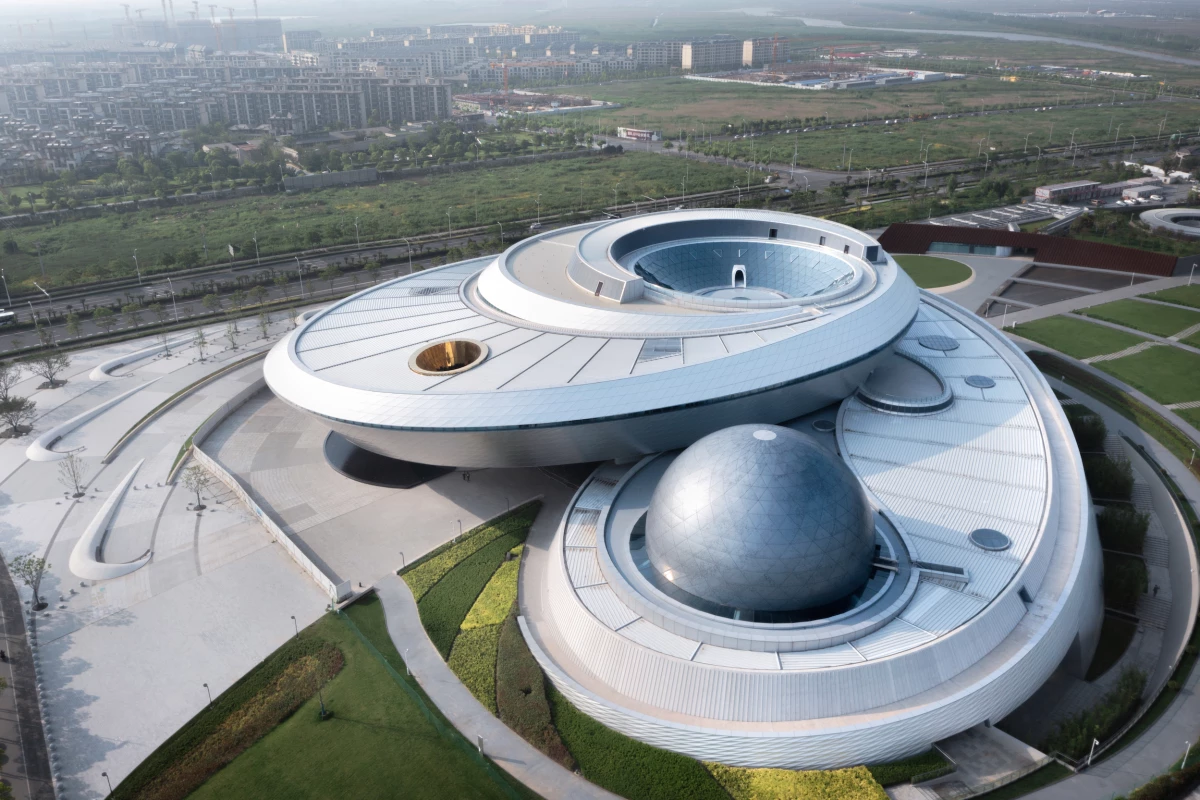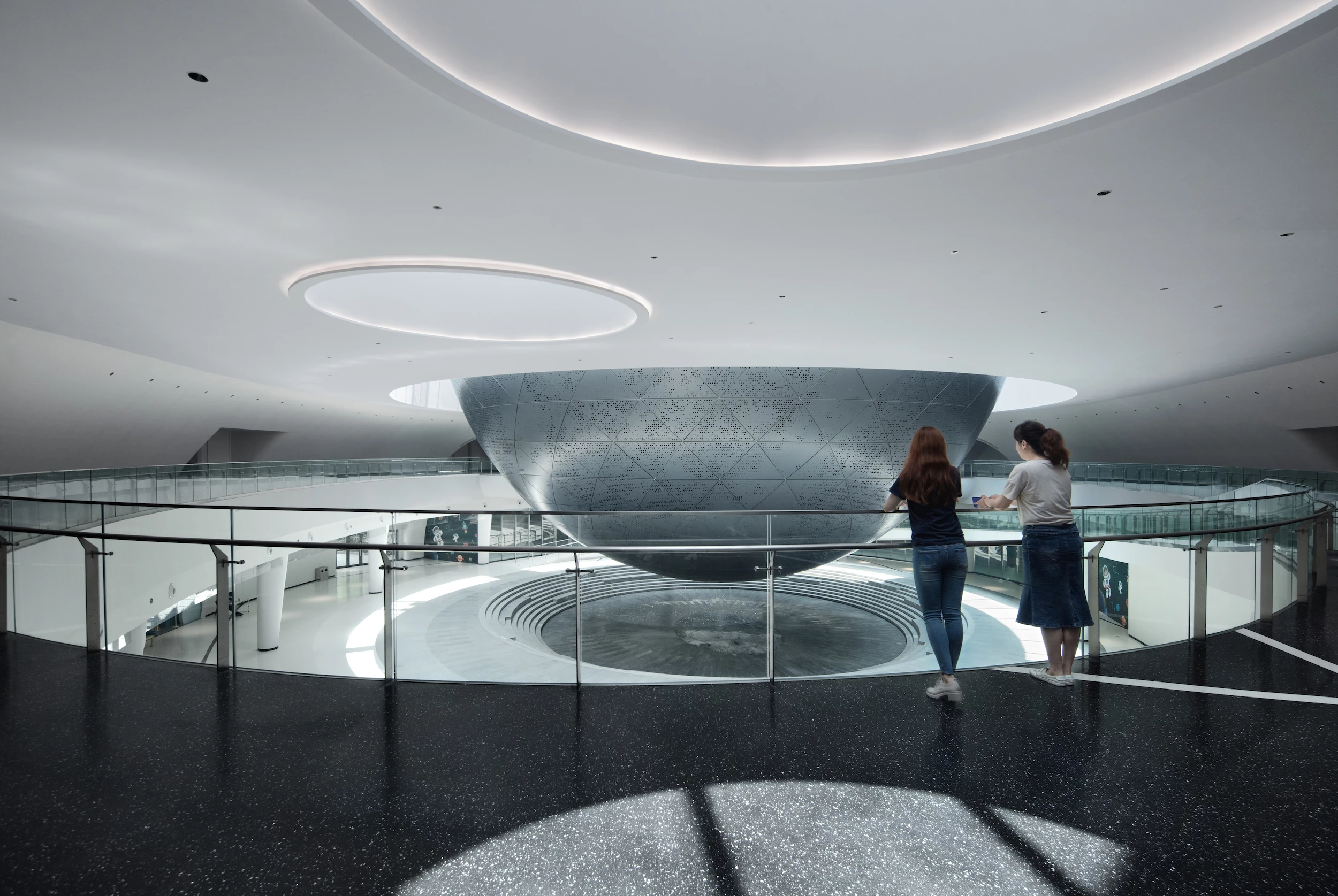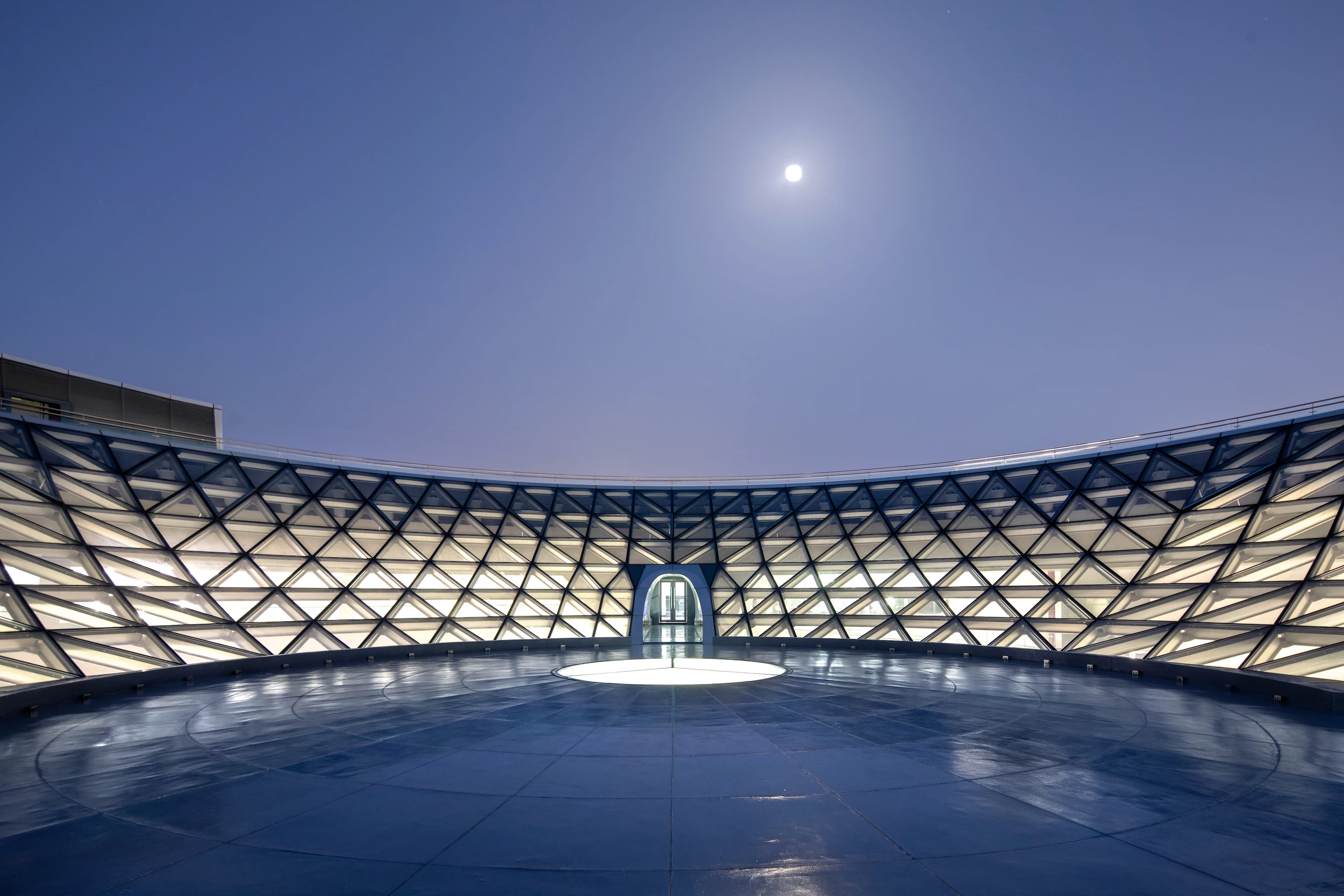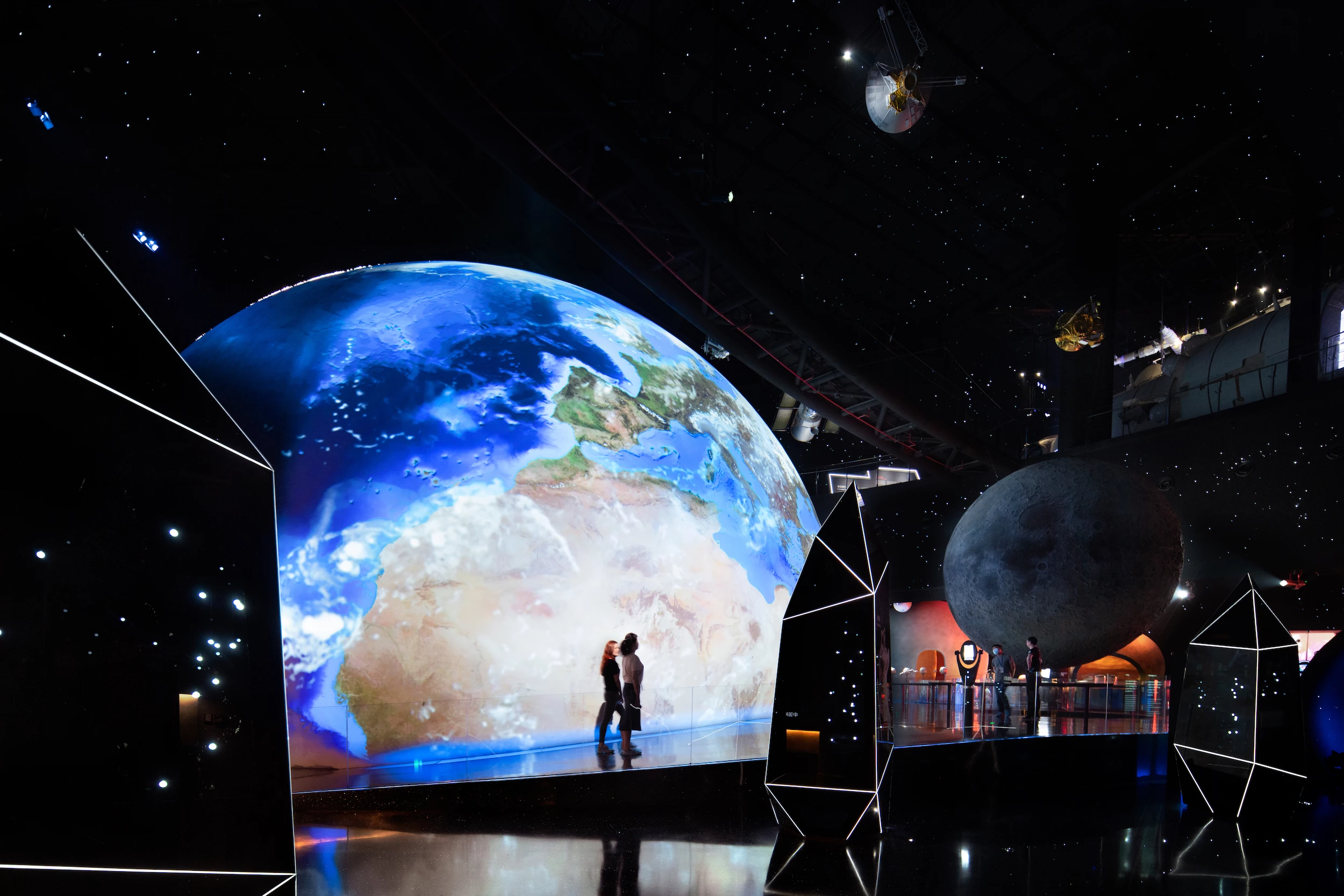Ennead Architects has completed work on a stunning new astronomy museum in Shanghai, China, that also happens to be the world's largest. The building's curving design – it contains no straight lines or right angles – is inspired by the cosmos and parts of it function a little like an oversized sundial, marking the passage of time.
The Shanghai Astronomy Museum measures 420,000 sq ft (roughly 40,000 sq m). It includes temporary and permanent exhibits, as well as several smaller surrounding buildings, and hosts a solar telescope, an observatory, an education and research center, a theater, and a planetarium, plus viewing points and more. The main building's overall form is defined by three main elements: The Oculus, the Sphere, and the Inverted Dome.
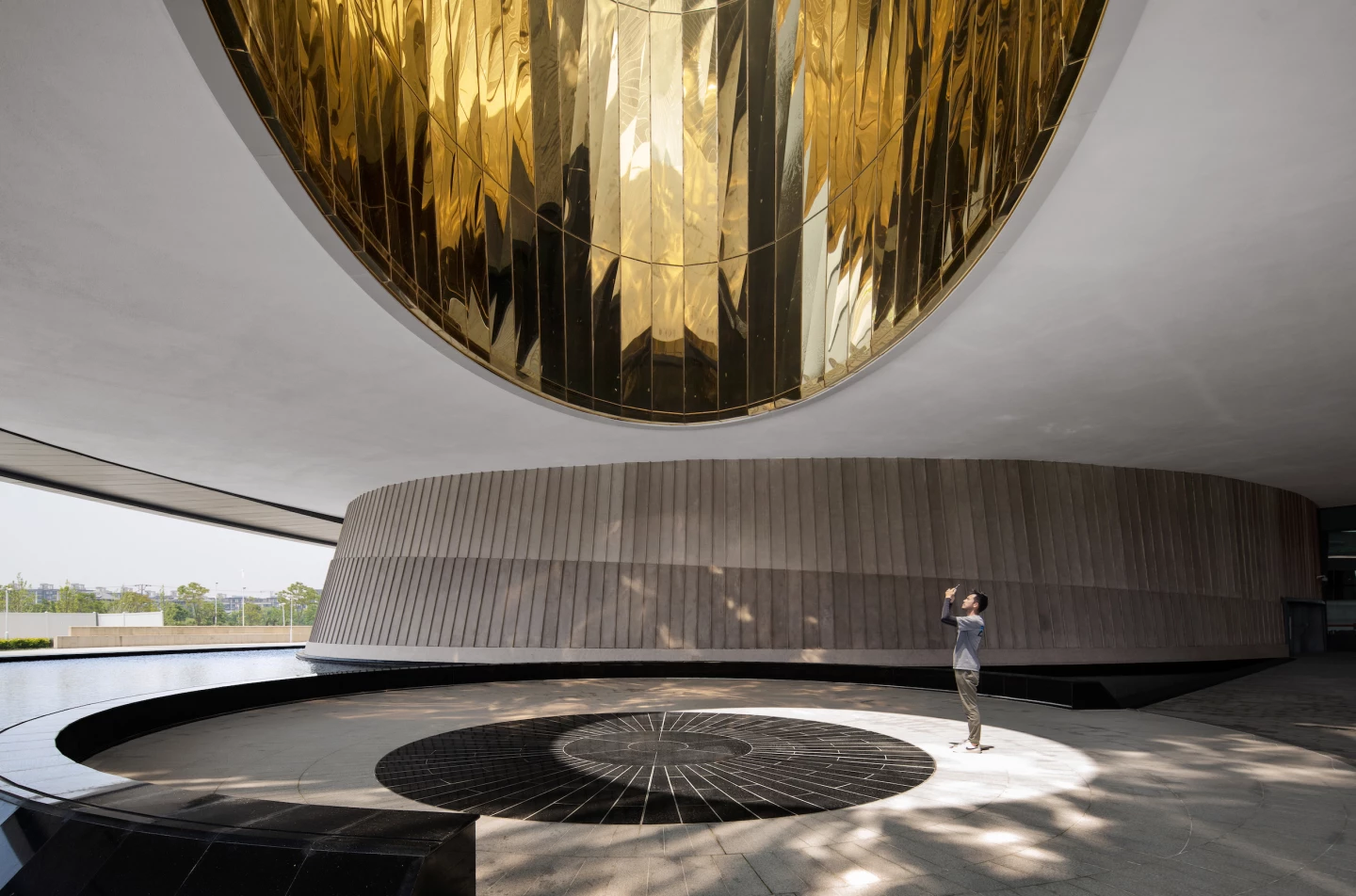
The Oculus is suspended above the main entrance and tracks a circle of sunlight on the ground across the entry plaza and reflecting pool. During the summer solstice, there is a full circle, which then lines up with a circular platform in the entry plaza at noon. This sort of thing has been done before with modern architecture of course, but this is a particularly well executed example.
Inside the museum proper is the Sphere. With visible supports kept to a minimum, it's designed to create the illusion of floating in mid-air for visitors, while its interior contains the planetarium theater. Finally, the Inverted Dome is a large inverted glass structure which rests on top of the central atrium of the building and can be reached by a 720-degree spiraling ramp. The area presents visitors with a view of the sky.

"Winners of the international design competition in 2014, Ennead delivered an architecturally ambitious design – without straight lines or right angles, echoing the geometry of the universe and the dynamic energy of celestial movement," explains the firm's press release. "[Architect Thomas J. Wong] drew inspiration from the classic 'three-body problem' in physics, looking to the intricate choreographies created by gravitational attraction of multiple bodies within solar systems. This is reflected in the winding architectural ribbons of the Museum's facade."
The Shanghai Astronomy Museum opened to visitors on July 18, and serves as the new astronomical branch of Perkins + Will's Shanghai Science and Technology Museum, which was completed back in 2015.
Source: Ennead Architects
